For their 21st, many girls are happy to receive money, jewellery, possibly a new phone or even for the lucky few, a first car. For Mary Troy, the stand-out present for her on that memorable birthday was none other than a set of calving cameras, gifted to her by an aunt.
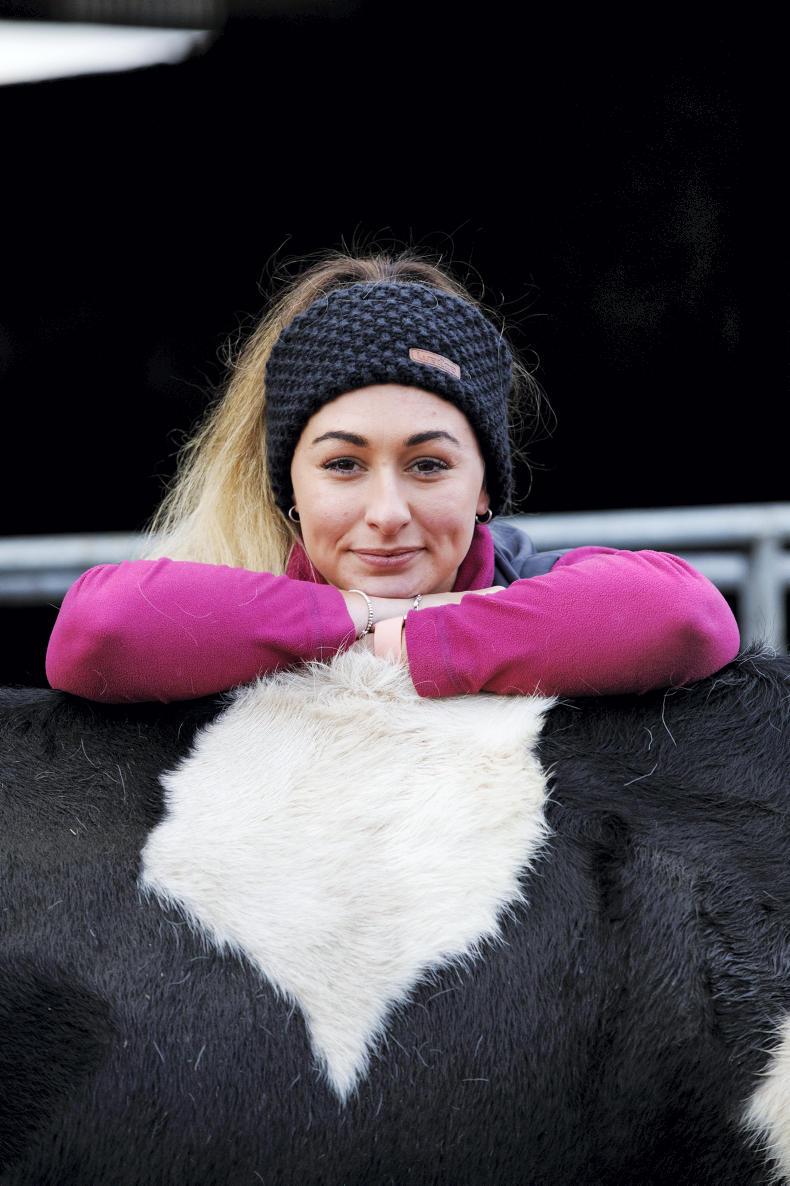
Flicking through the screens on her phone, Mary displays the different angles in the shed. Calving is well and truly underway in her dairy herd when
Irish Country Living visits the farm in Co Waterford, just a stone’s throw from the Cork border – but firmly of the Déise variety.
Just turned 25, Mary is now coming into her fifth year of dairying, milking 80 Holstein-Friesian cows. Her journey to this point has been peppered in equal measures with poignancy and determination. Some doubted her, but more importantly, Mary never doubted herself.
“Even up to about two or three years ago, people were doubting me,” remarks Mary. “People would come in here and say, ‘I didn’t think you’d do it, I didn’t think you’d get to where you are’. But I was never going to let the farm go, ever. Dad worked too hard to get to where he was. He put his heart and soul into it here. I wasn’t going to let that go.”
Taking the reins
From a young age, Mary knew she wanted to milk cows. Her father Con was in dairy until she was seven, and self-confessed, she was always “stuck to him”. 
“All I ever wanted to do was milk cows, farm with him and milk cows. Sure I was with him all the time anyway – I wasn’t going to do anything else,” says Mary simply.
“I love calf rearing. Even when I was a small girl that’s what I used to do with Dad. Dad would walk into the pen of calves and he’d go, ‘Mar, whose mother is that?’ Off the top of my head I’d go, ‘345’, or whatever it was.”
Con lost his dairy herd to TB. After that he came out of milk altogether and started finishing cattle, which he did until he sadly passed away of lung cancer when Mary was in her Leaving Cert year.
“When Dad died he was 64, so he was only kind of tipping along until I got my school stuff done and then we were going to do it together. I was only 17 when he died.
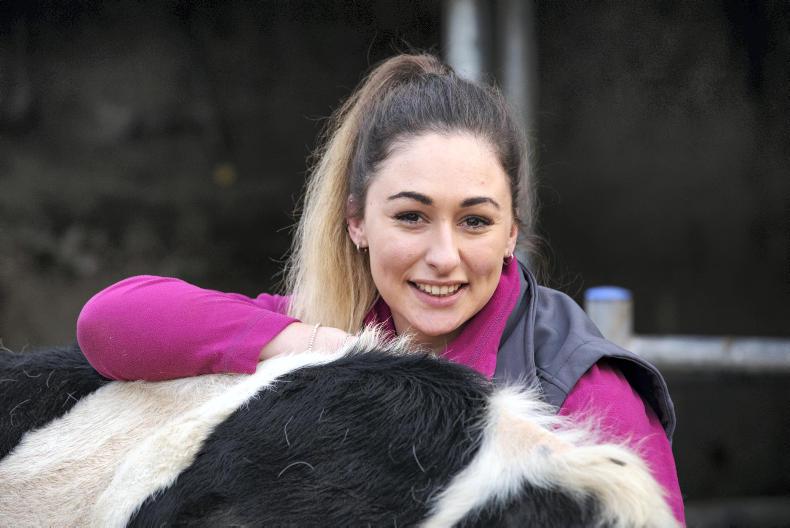
“Everyone, even lads that come in here now, they’d be like, ‘Are you the small girl that used to be tipping around with him?’ or ‘You were at the races’ or ‘You were in the mart’. We used to kill each other too, don’t get me wrong, but that’s the way it is. Mam would tell you, I’d often come storming down here after fighting, but we were so close,” smiles Mary.
The eldest of three daughters, Mary took up the mantel on the farm. Her mother Olive and two younger sisters weren’t that into the farming side of things.
The first year following her father’s passing, she continued with the existing system on farm and when she finished school, she went to Kildalton Agricultural College to study equine. Con was big into horses.
Mary then went on to do her Green Cert and she began to experiment a bit more with stock at home. One of her lecturers helped her pick out bulls for maiden Limousine heifers, but still the goal was always to go milking.

After completing her Green Cert, Mary decided to convert the farm back to dairy. \ Donal O’Leary
Three weeks after finishing her Green Cert and 13 years after her father finished up in the parlour, Mary started milking in her own right at the age of 20, supplying Glanbia.
I have two younger sisters, they’re both studying nursing now, finishing this year, but she had to get the three of us through college
“That was the aim, that I was going to milk. I kept pushing, Mam is from Dublin and the hardest thing was trying to convince her that it was going to be OK. She was worried about money and everything else,” recalls Mary.
“I have two younger sisters, they’re both studying nursing now, finishing this year, but she had to get the three of us through college. I was so determined I was going milking cows and I was going to make it work.”
Me, myself and milking
Back in the here and now, Mary shows us around the yard before she starts into evening milking. There was a lot to do in getting the farm back up and dairying. Loans had to be taken out to cover the cost of the parlour, cows and tractor. The parlour was the shell of her father’s, but the whole thing was redone. There’s now 10 units, with room at the back for four more if she wants to expand.
“My parlour is basic, it’s just to get me up and milking and get money in the bank. The buildings are run down, they’re Dad’s buildings. I’ll get to them in time, they’re functioning.”

Mary says there was a lot to do when she was getting the farm back up and dairying. \ Donal O’Leary
This is very typical of Mary’s mindset. She’s of the view that the best way to do things is bit by bit. Stay at 80 cows, pay off the loans, then start getting everything else in line, before considering expanding.
“I’m only 25, there’s plenty time, I’m happy just to tip along and get there slowly. There’s no point running, because then we’ll crash, so we’ll just get there slowly.”
That was my longest calving, that was six months calving, because I started on my own lot and the crowd I bought the heifers off said, ‘They’ll calve in the next three or four weeks’. The end of June they finished calving
Initially, Mary started in May 2015 with 15 cows. She bought more cows and in-calf heifers that October. They all calved the following spring 2016 and she also purchased more heifers ready to calve at the same time, or so she thought.
“That was my longest calving, that was six months calving, because I started on my own lot and the crowd I bought the heifers off said, ‘They’ll calve in the next three or four weeks’. The end of June they finished calving.
“I’ll never forget it, 29 January to 29 June. It was annoying because it was in dribs and drabs. Anyway, we got over that too. So I’m after bringing back my calving over four years to 12 or 13 weeks. I went from 44 at the end of 2015 to 65 the following year and then 80.”

Mary says she has great support from those around her. \ Donal O’Leary
Mary speaks about challenges honestly and admits she’s not afraid to ask for help. Even though she’s quite open, she doesn’t dwell on things. “Push forward, keep going, plough on. I thrive off all that.”
In a way, Mary has gone it alone, but she is at pains to point out the support she has received from people. Neighbours, vets, contractors and lecturers have all mucked in to help her.
“I’m a one-woman show, but there are so many people around me that have gotten me here. I wouldn’t have done it without the support around me. Two of my neighbours up the road, friends of Dad’s, they have the experience. I’d ring them and I’d be like, ‘I really don’t know what to do’.
Their help has been absolutely invaluable to me
“One of them would come down and be like, ‘Right, look, we’ll do this’. Then when I watch him doing it and I’m like, ‘What if we do it that way?’. It’s like the old and new together. They have the experience and I can bring new knowledge to them then. Their help has been absolutely invaluable to me.”
Fathers and daughters
In the beginning, Mary put her life on hold to milk. Now however, she uses a relief milker, who she’ll begin to call on again from April/May time. Since last year, she started sending her calves to a contract rearer. This clears up time to see her friends and enjoy herself a little.
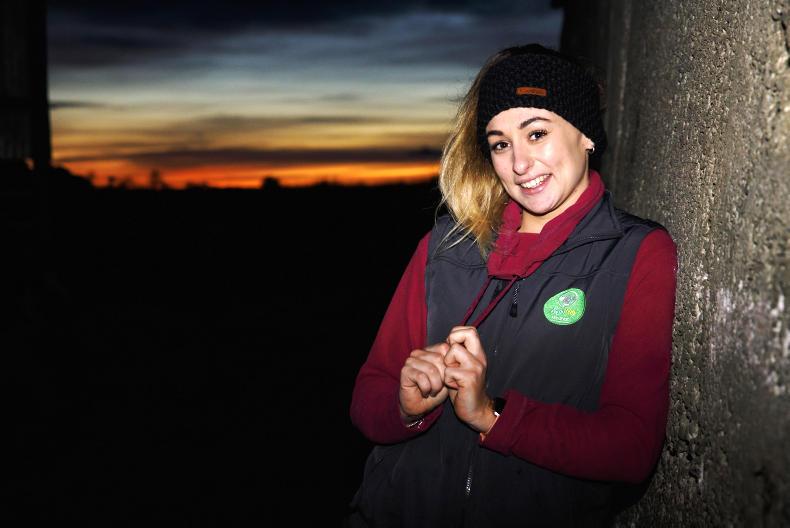
Dairy farmer Mary Troy, Grange, Co Waterford. / Donal O' Leary
Mary’s friends are well used to her lifestyle. In her small part of the world, overlooking Ardmore beach, being a woman milking isn’t unusual. Her best friend just down the road is milking with her own father.
“It wasn’t the thing to do to give your farm to your daughter, but we wouldn’t be here if it wasn’t for me milking. There are three daughters here and no son, it’d be gone. It’s great that people are after opening up to the idea that women actually can do it and they can take over.
You mightn’t be strong enough to do something, then you might need some help or a tractor
“It’s great to have other girls farming, there’s a group of us now on Instagram and we have a chat. It’s just being able to put things in and other girls understanding what’s going on. It’s grand and fine to talk to lads, but you know other girls will understand some of the struggles we might have.
“You mightn’t be strong enough to do something, then you might need some help or a tractor.”
Undoubtedly, Mary is a woman blazing her own trail in farming, but it’s a path inspired by an important man all the same.
“Looking back, I’m proud. I’d love if Dad was here, obviously.”
Irish Country Living thinks her father is proud.
“I’m sure he is,” replies Mary.
Read more
‘We’re equal and we’re working together’
My Country Living: 'I wouldn't like anyone to think that I know it all, because I don't'
For their 21st, many girls are happy to receive money, jewellery, possibly a new phone or even for the lucky few, a first car. For Mary Troy, the stand-out present for her on that memorable birthday was none other than a set of calving cameras, gifted to her by an aunt.

Flicking through the screens on her phone, Mary displays the different angles in the shed. Calving is well and truly underway in her dairy herd when
Irish Country Living visits the farm in Co Waterford, just a stone’s throw from the Cork border – but firmly of the Déise variety.
Just turned 25, Mary is now coming into her fifth year of dairying, milking 80 Holstein-Friesian cows. Her journey to this point has been peppered in equal measures with poignancy and determination. Some doubted her, but more importantly, Mary never doubted herself.
“Even up to about two or three years ago, people were doubting me,” remarks Mary. “People would come in here and say, ‘I didn’t think you’d do it, I didn’t think you’d get to where you are’. But I was never going to let the farm go, ever. Dad worked too hard to get to where he was. He put his heart and soul into it here. I wasn’t going to let that go.”
Taking the reins
From a young age, Mary knew she wanted to milk cows. Her father Con was in dairy until she was seven, and self-confessed, she was always “stuck to him”. 
“All I ever wanted to do was milk cows, farm with him and milk cows. Sure I was with him all the time anyway – I wasn’t going to do anything else,” says Mary simply.
“I love calf rearing. Even when I was a small girl that’s what I used to do with Dad. Dad would walk into the pen of calves and he’d go, ‘Mar, whose mother is that?’ Off the top of my head I’d go, ‘345’, or whatever it was.”
Con lost his dairy herd to TB. After that he came out of milk altogether and started finishing cattle, which he did until he sadly passed away of lung cancer when Mary was in her Leaving Cert year.
“When Dad died he was 64, so he was only kind of tipping along until I got my school stuff done and then we were going to do it together. I was only 17 when he died.

“Everyone, even lads that come in here now, they’d be like, ‘Are you the small girl that used to be tipping around with him?’ or ‘You were at the races’ or ‘You were in the mart’. We used to kill each other too, don’t get me wrong, but that’s the way it is. Mam would tell you, I’d often come storming down here after fighting, but we were so close,” smiles Mary.
The eldest of three daughters, Mary took up the mantel on the farm. Her mother Olive and two younger sisters weren’t that into the farming side of things.
The first year following her father’s passing, she continued with the existing system on farm and when she finished school, she went to Kildalton Agricultural College to study equine. Con was big into horses.
Mary then went on to do her Green Cert and she began to experiment a bit more with stock at home. One of her lecturers helped her pick out bulls for maiden Limousine heifers, but still the goal was always to go milking.

After completing her Green Cert, Mary decided to convert the farm back to dairy. \ Donal O’Leary
Three weeks after finishing her Green Cert and 13 years after her father finished up in the parlour, Mary started milking in her own right at the age of 20, supplying Glanbia.
I have two younger sisters, they’re both studying nursing now, finishing this year, but she had to get the three of us through college
“That was the aim, that I was going to milk. I kept pushing, Mam is from Dublin and the hardest thing was trying to convince her that it was going to be OK. She was worried about money and everything else,” recalls Mary.
“I have two younger sisters, they’re both studying nursing now, finishing this year, but she had to get the three of us through college. I was so determined I was going milking cows and I was going to make it work.”
Me, myself and milking
Back in the here and now, Mary shows us around the yard before she starts into evening milking. There was a lot to do in getting the farm back up and dairying. Loans had to be taken out to cover the cost of the parlour, cows and tractor. The parlour was the shell of her father’s, but the whole thing was redone. There’s now 10 units, with room at the back for four more if she wants to expand.
“My parlour is basic, it’s just to get me up and milking and get money in the bank. The buildings are run down, they’re Dad’s buildings. I’ll get to them in time, they’re functioning.”

Mary says there was a lot to do when she was getting the farm back up and dairying. \ Donal O’Leary
This is very typical of Mary’s mindset. She’s of the view that the best way to do things is bit by bit. Stay at 80 cows, pay off the loans, then start getting everything else in line, before considering expanding.
“I’m only 25, there’s plenty time, I’m happy just to tip along and get there slowly. There’s no point running, because then we’ll crash, so we’ll just get there slowly.”
That was my longest calving, that was six months calving, because I started on my own lot and the crowd I bought the heifers off said, ‘They’ll calve in the next three or four weeks’. The end of June they finished calving
Initially, Mary started in May 2015 with 15 cows. She bought more cows and in-calf heifers that October. They all calved the following spring 2016 and she also purchased more heifers ready to calve at the same time, or so she thought.
“That was my longest calving, that was six months calving, because I started on my own lot and the crowd I bought the heifers off said, ‘They’ll calve in the next three or four weeks’. The end of June they finished calving.
“I’ll never forget it, 29 January to 29 June. It was annoying because it was in dribs and drabs. Anyway, we got over that too. So I’m after bringing back my calving over four years to 12 or 13 weeks. I went from 44 at the end of 2015 to 65 the following year and then 80.”

Mary says she has great support from those around her. \ Donal O’Leary
Mary speaks about challenges honestly and admits she’s not afraid to ask for help. Even though she’s quite open, she doesn’t dwell on things. “Push forward, keep going, plough on. I thrive off all that.”
In a way, Mary has gone it alone, but she is at pains to point out the support she has received from people. Neighbours, vets, contractors and lecturers have all mucked in to help her.
“I’m a one-woman show, but there are so many people around me that have gotten me here. I wouldn’t have done it without the support around me. Two of my neighbours up the road, friends of Dad’s, they have the experience. I’d ring them and I’d be like, ‘I really don’t know what to do’.
Their help has been absolutely invaluable to me
“One of them would come down and be like, ‘Right, look, we’ll do this’. Then when I watch him doing it and I’m like, ‘What if we do it that way?’. It’s like the old and new together. They have the experience and I can bring new knowledge to them then. Their help has been absolutely invaluable to me.”
Fathers and daughters
In the beginning, Mary put her life on hold to milk. Now however, she uses a relief milker, who she’ll begin to call on again from April/May time. Since last year, she started sending her calves to a contract rearer. This clears up time to see her friends and enjoy herself a little.

Dairy farmer Mary Troy, Grange, Co Waterford. / Donal O' Leary
Mary’s friends are well used to her lifestyle. In her small part of the world, overlooking Ardmore beach, being a woman milking isn’t unusual. Her best friend just down the road is milking with her own father.
“It wasn’t the thing to do to give your farm to your daughter, but we wouldn’t be here if it wasn’t for me milking. There are three daughters here and no son, it’d be gone. It’s great that people are after opening up to the idea that women actually can do it and they can take over.
You mightn’t be strong enough to do something, then you might need some help or a tractor
“It’s great to have other girls farming, there’s a group of us now on Instagram and we have a chat. It’s just being able to put things in and other girls understanding what’s going on. It’s grand and fine to talk to lads, but you know other girls will understand some of the struggles we might have.
“You mightn’t be strong enough to do something, then you might need some help or a tractor.”
Undoubtedly, Mary is a woman blazing her own trail in farming, but it’s a path inspired by an important man all the same.
“Looking back, I’m proud. I’d love if Dad was here, obviously.”
Irish Country Living thinks her father is proud.
“I’m sure he is,” replies Mary.
Read more
‘We’re equal and we’re working together’
My Country Living: 'I wouldn't like anyone to think that I know it all, because I don't'














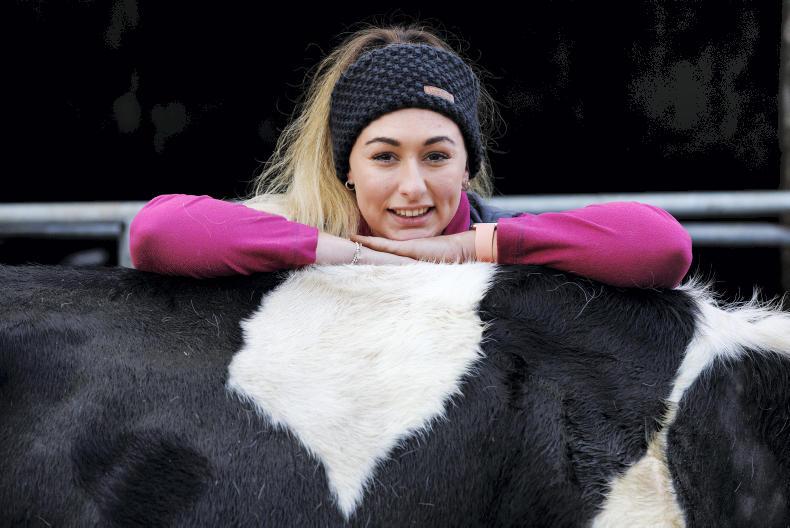
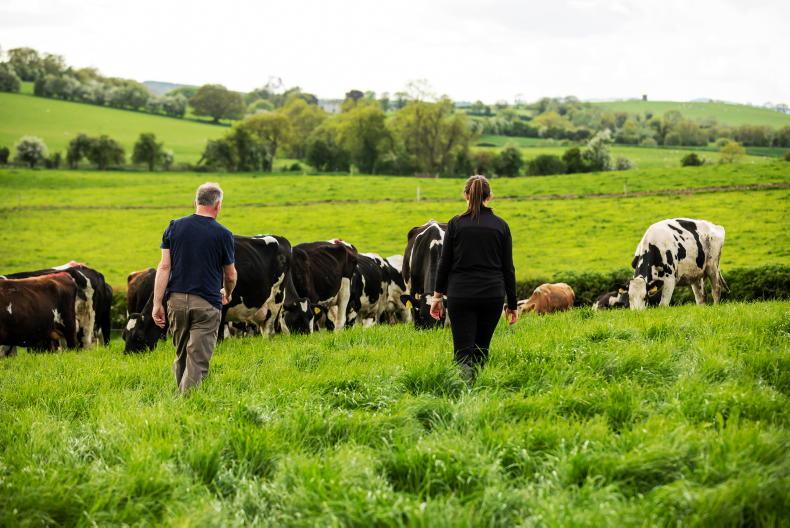

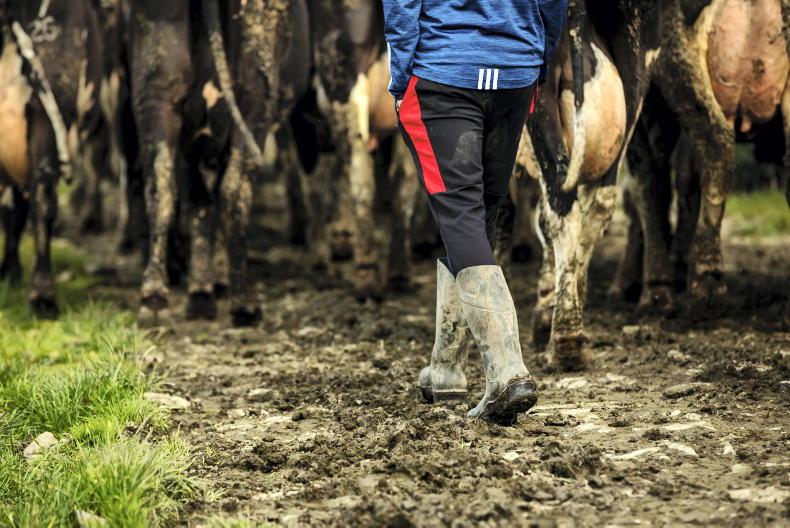


SHARING OPTIONS